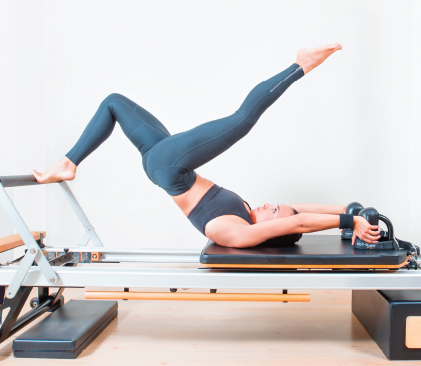Author: Niki McGuinness (Chiropractor)
(please note, this is an opinion article)
Lets’ face it, everyone loves Pilates, especially reformer Pilates. So I made it my job to find out why and what was it that made people fall in love.
When I asked one of my current patients (I’m a Chiropractor), she said she just couldn’t believe how strong she feels in just 4 weeks of doing only 2 classes a week. This was surprising because this patient had suffered years of back problems. My favourite saying to my patients is ‘strong is the new skinny!
I have to be honest, as a functional rehabilitation Chiropractor, it just didn’t make sense to me that strengthening is happening in the lying down position. It just seems completely non-functional! So I also decided to try the class…….I LOVED IT too! I just couldn’t believe how I could isolate specific muscles in such a comfortable way. My legs were burning yet interestingly, I didn’t feel really sore the next day and I could see how easy it would be to feel stronger doing Pilates regularly.
I asked another patient why she loved it so much. She has been doing Privates with us twice a week since we opened. Can you believe she’s in her 80’s! Her comments were ‘ohh love, I wish I had found it years ago’. I just absolutely love this.
Our instructor also said there were many other training types you can do with the Pilates reformer such as jump class (a type of HIT class) or hip flexibility class. We can do upper body, lower body, back, ankles and calves. The limit is endless and there is absolutely no way you could ever beat the highest spring resistance
SOME OF THE SCIENCE
So I am a bit of a science nerd, I used to work as a Clinical Research Nurse, so it’s just built within me. So I thought I would also take a look at some of the science and evidence behind the benefits:
A simple systematic review of the research found that there is considerable evidence to support the claims that Pilates not only strengthens specific muscles, but it also increases flexibility and possibly even improve proprioception and balance in seniors. Most importantly there is some emerging evidence that Pilates may be effective in improving abdominal and lumbopelvic stability in muscular activity. In lay-mans terms, this may contribute to improving chronic low back pain (Kloubec, J; 2011 ‘Pilates: how does it work and who needs it?. Muscle Ligaments and Tendons J. Apr -Jun;1 (2) 61-66)
When you think that around 4.2% of the population will be diagnosed with chronic low back pain, this is pivotal in assisting these clients to not only improve their quality of life but also in turn provide economically through the workforce and family relationships.
This alone is enough for me to jump on the Pilates bandwagon and join the class…..literally
 0413 009 793
0413 009 793
